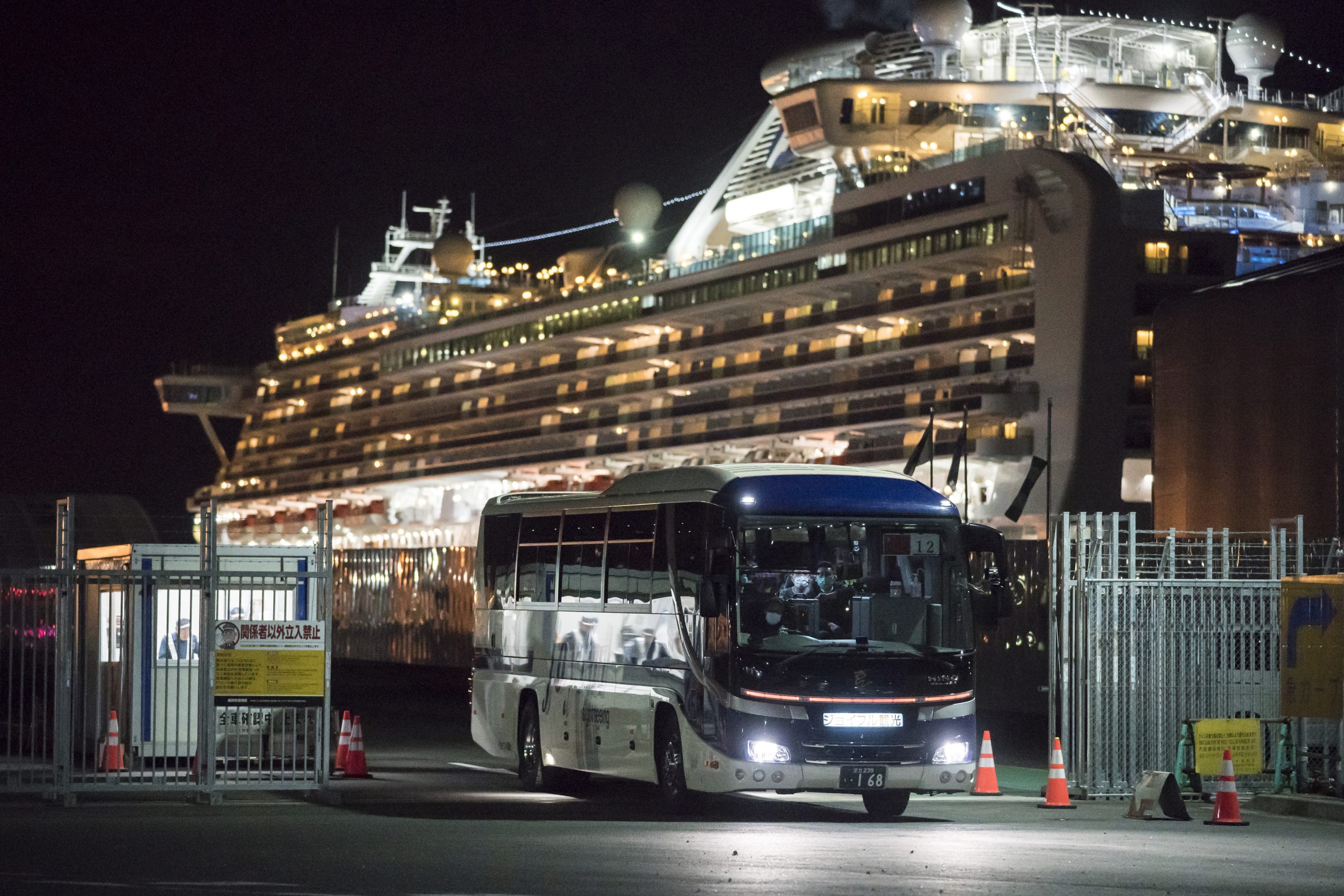On Wednesday, the initial 14-day quarantine aboard a coronavirus-stricken cruise ship docked in Yokohama, Japan, officially ended. But the grueling saga seems far from for over for the ship’s 3,711 passengers and crew.
As the quarantine time ran out, Japanese officials were still reporting dozens of new cases of COVID-19 aboard. As of Wednesday, the number of coronavirus infections linked to the ship total 621—by far the largest cluster of COVID-19 cases anywhere outside of China. The next-largest cluster outside of China is in Singapore, which has 84 confirmed cases.
Japanese health officials are facing international criticism for their handling of the quarantine on the ship, the Diamond Princess. The quarantine was intended to curb the spread of disease by keeping people aboard, isolated from each other and from the public on land. But as cases mounted over the two weeks, it became clear that the control efforts only enabled the new coronavirus to spread. In fact, the 621 cases include at least three Japanese health officials, who were there to support the quarantine efforts but ended up becoming infected themselves.
"The quarantine process failed," Dr. Anthony Fauci, director of the National Institute of Allergy and Infectious Diseases at the National Institutes of Health, said Monday. "I'd like to sugarcoat it and try to be diplomatic about it, but it failed. People were getting infected on that ship. Something went awry in the process of the quarantining on that ship. I don't know what it was, but a lot of people got infected on that ship."
Floating petri dish
Passenger Arnold Hopland, a primary-care physician from Tennessee, provided some hints as to what went wrong. In an interview with The Wall Street Journal, Dr. Hopland described passengers drying their laundry on cabin balconies and leaning over to chat with neighbors while not wearing face masks.
Though passengers were largely confined to their cabins during the 14-day quarantine, they were allowed to take walks on the decks. They were instructed to wear face masks and keep their distance from other passengers during the strolls, but health experts are skeptical that everyone was compliant.
Additionally, Dr. Hopland counted having contact with crew members up to 10 times a day as they went door-to-door, hand-delivering food and supplies to guests.
As the Associated Press pointed out, crew members were not in isolation. They continued to share rooms, eat together in a mess hall, serve guests, and enter guest cabins for cleaning.
Just before Dr. Hopland and his wife planned to board an evacuation plane chartered by the US State Department on Sunday, test results came back indicating his wife had contracted the virus. She was moved to a local hospital, and Dr. Hopland remains on the ship in an extended quarantine.
The chartered flights, meanwhile, repatriated over 300 other American cruise ship passengers, 14 of whom tested positive for the virus en route to the US.
“I was surprised I was negative because I knew the virus had swept through this boat like wildfire,” Dr. Hopland told the Journal. “My analogy is they put us in a petri dish to get infected.”
Ongoing risk
The case highlights the complexity of outbreak control and the continued uncertainty people aboard the cruise ship now face.
A paper published late Tuesday in the New England Journal of Medicine described the troubling case of two travelers who passed initial symptom-based screenings for the virus, only to be confirmed positive by a subsequent laboratory test. The two people were among a group of 126, predominantly German nationals, who were evacuated to Frankfurt, Germany, from Hubei province—the epicenter of the outbreak.
“We discovered that shedding of potentially infectious virus may occur in persons who have no fever and no signs or only minor signs of infection,” the authors concluded.
At almost the same time of the paper’s release, the US Centers for Disease Control and Prevention announced Tuesday that all passengers and crew of the Diamond Princess—including the more than 100 American citizens still on board are barred from entering the country for at least 14 days after they disembark from the ship.
“While the quarantine potentially conferred a significant public health benefit in slowing transmission, CDC’s assessment is that it may not have been sufficient to prevent transmission among individuals on the ship,” the agency said in a statement. “CDC believes the rate of new infections on board, especially among those without symptoms, represents an ongoing risk.”
The cruise ship passengers already returned to the United States are under a 14-day federal quarantine order and are being held at one of two military bases.
As of Wednesday, the outbreak of COVID-19 has reached over 75,000 cases worldwide, with 2,009 deaths.


